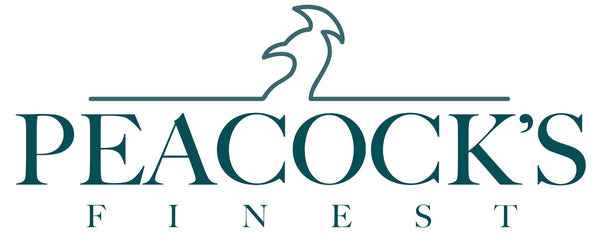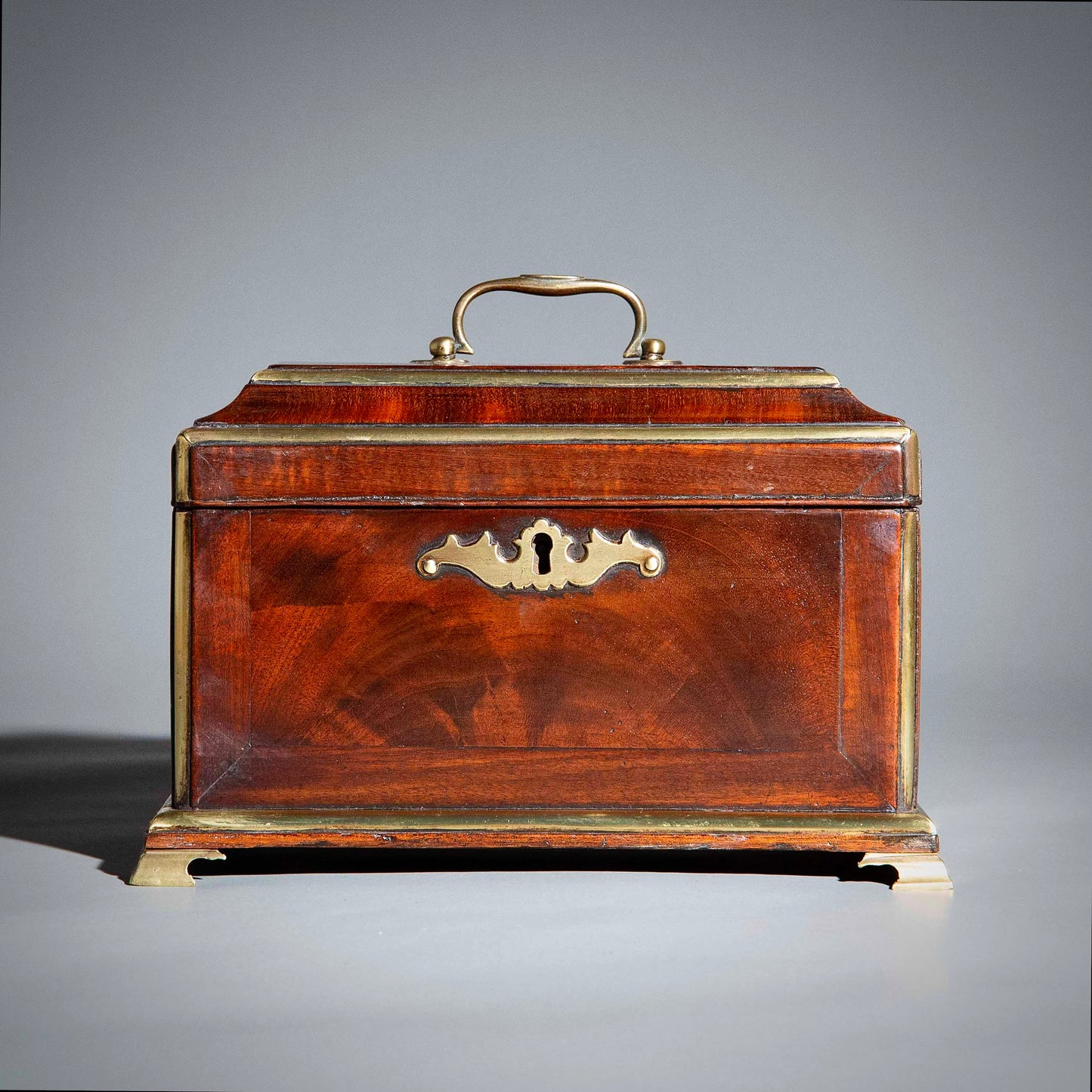
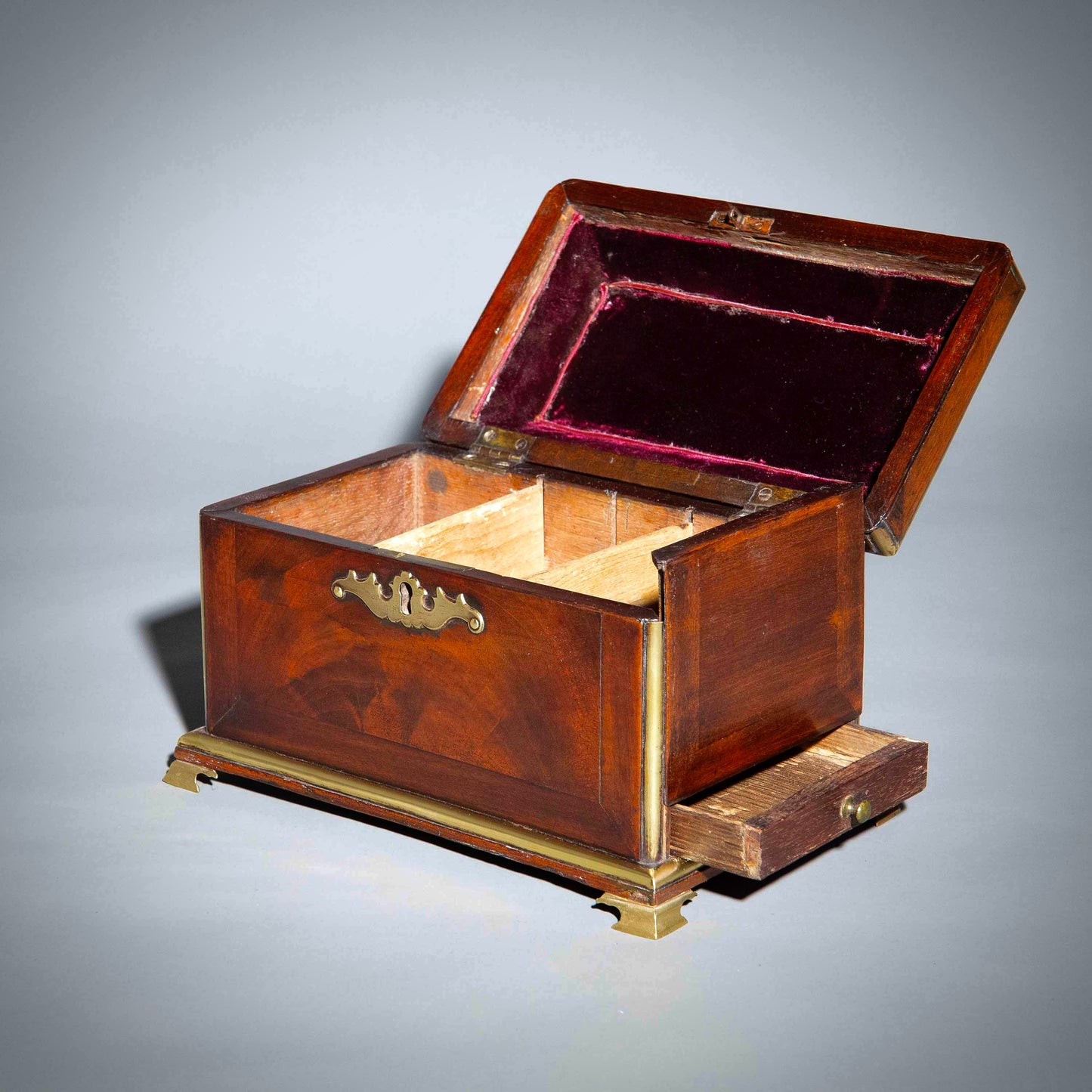
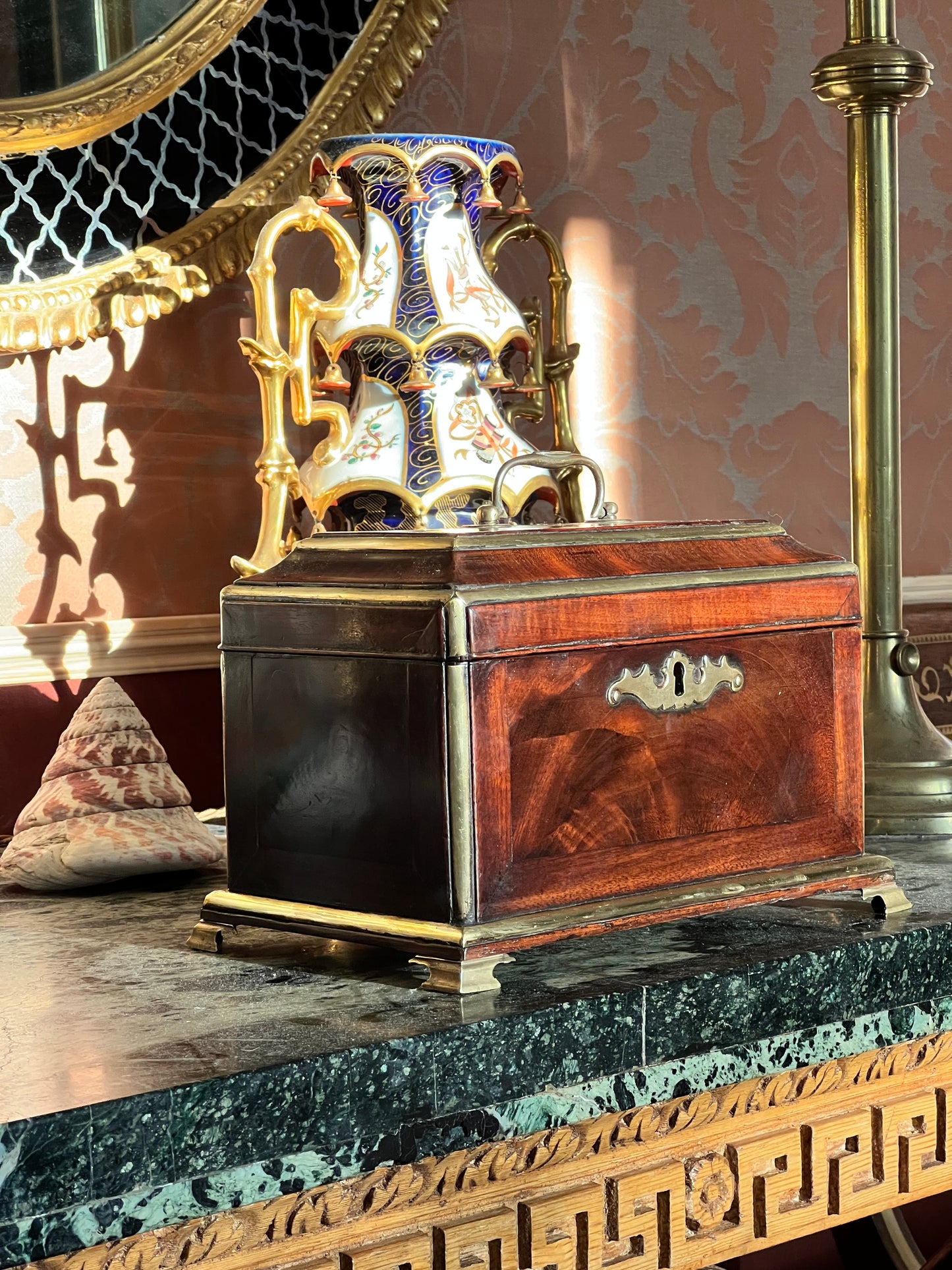
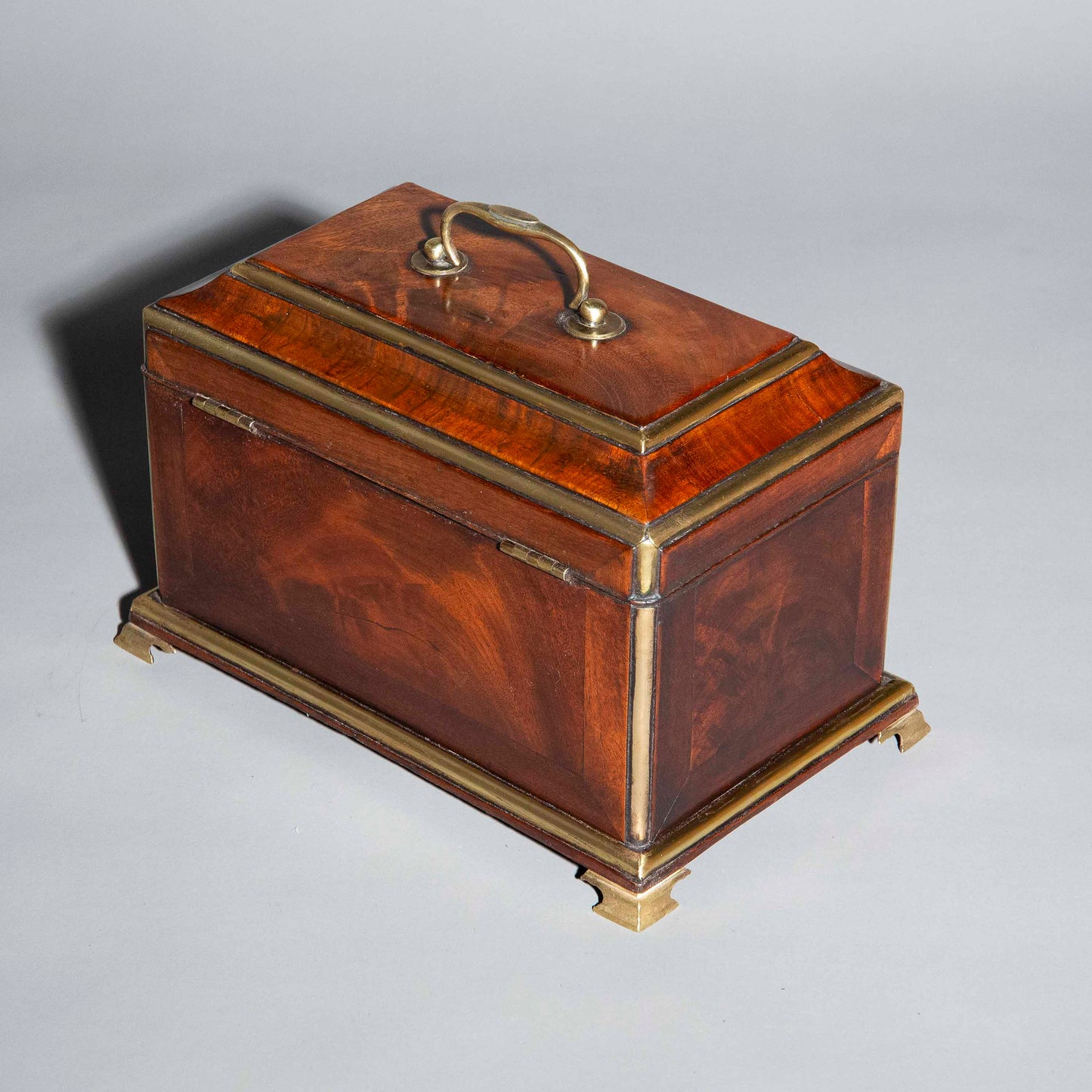
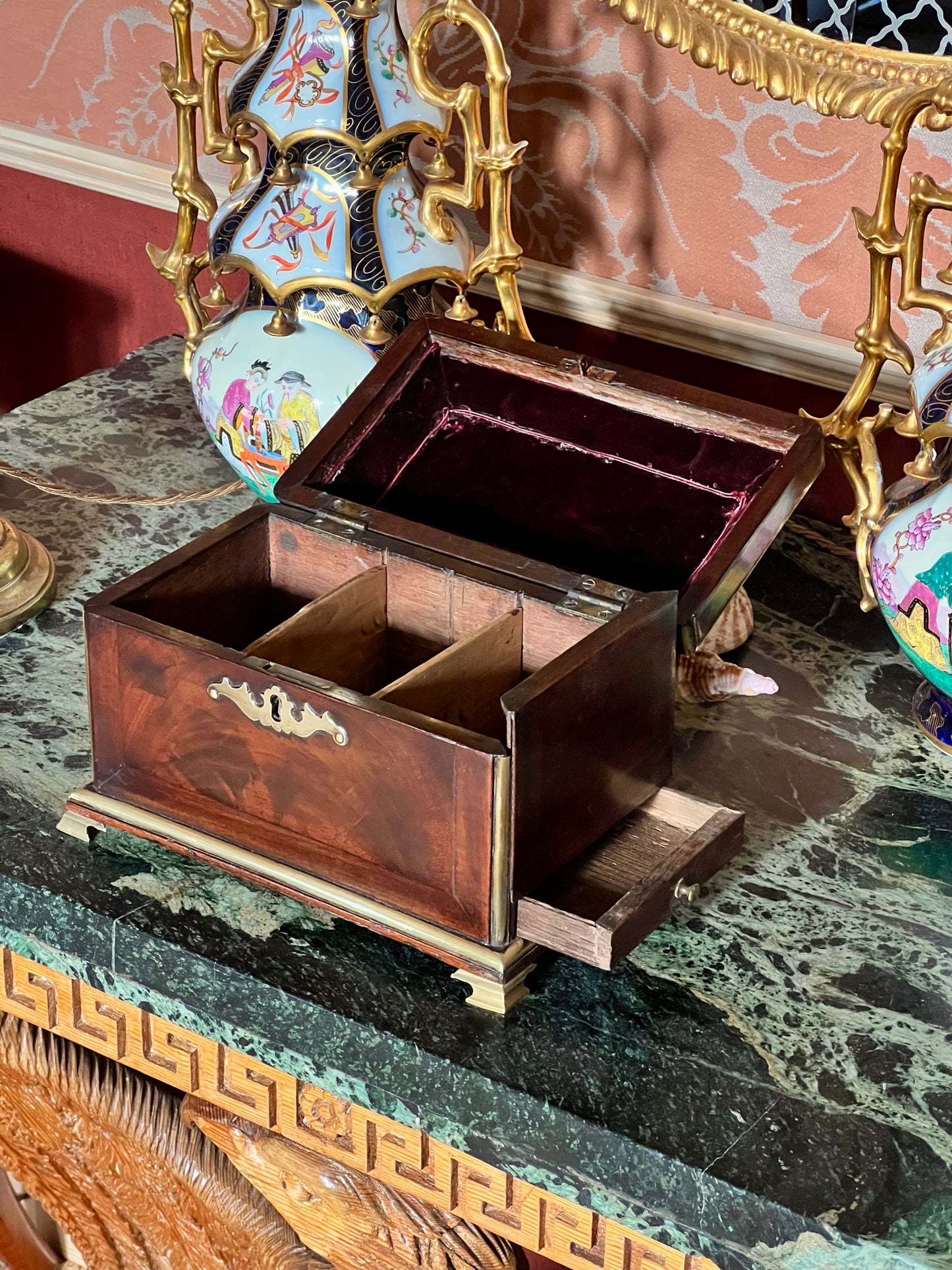
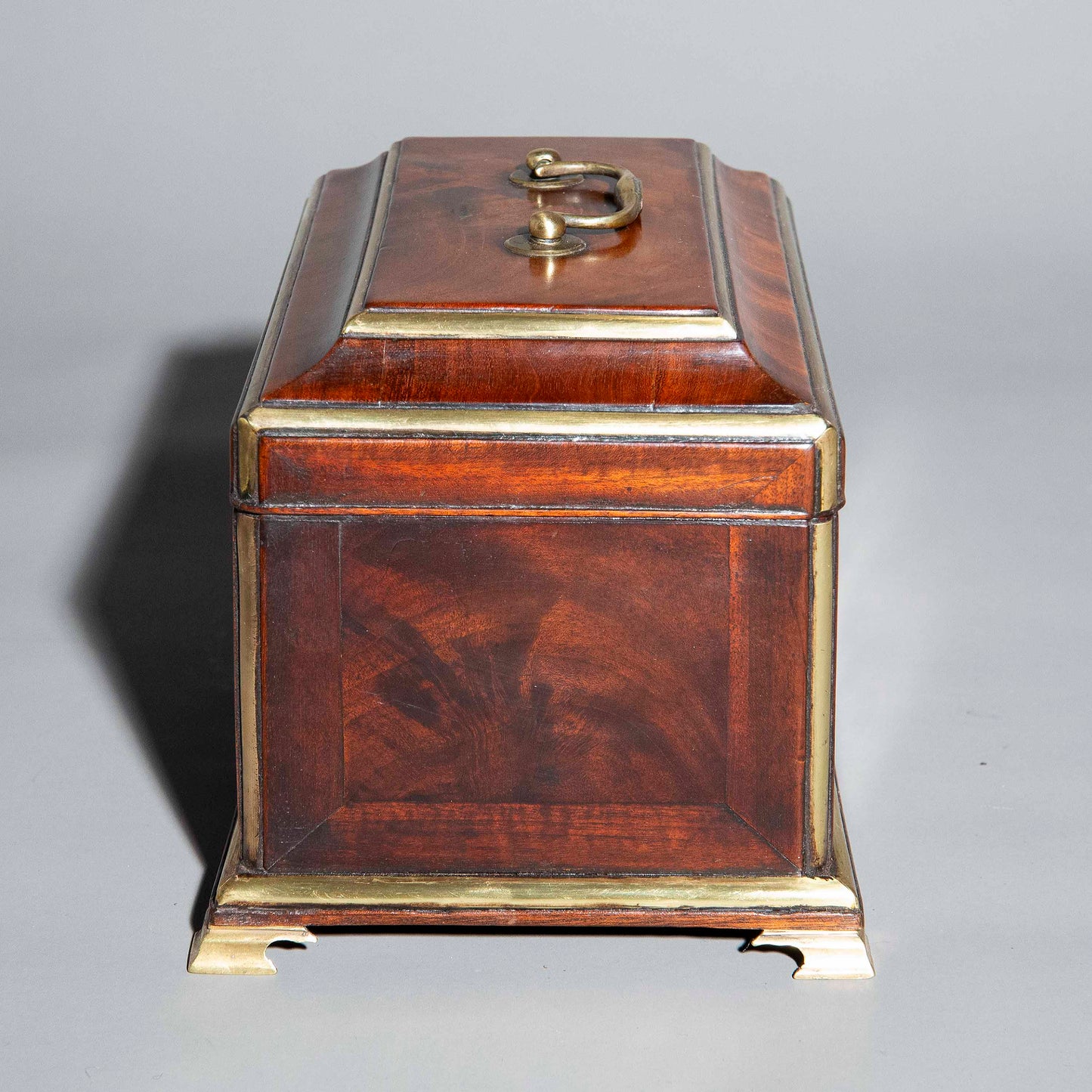
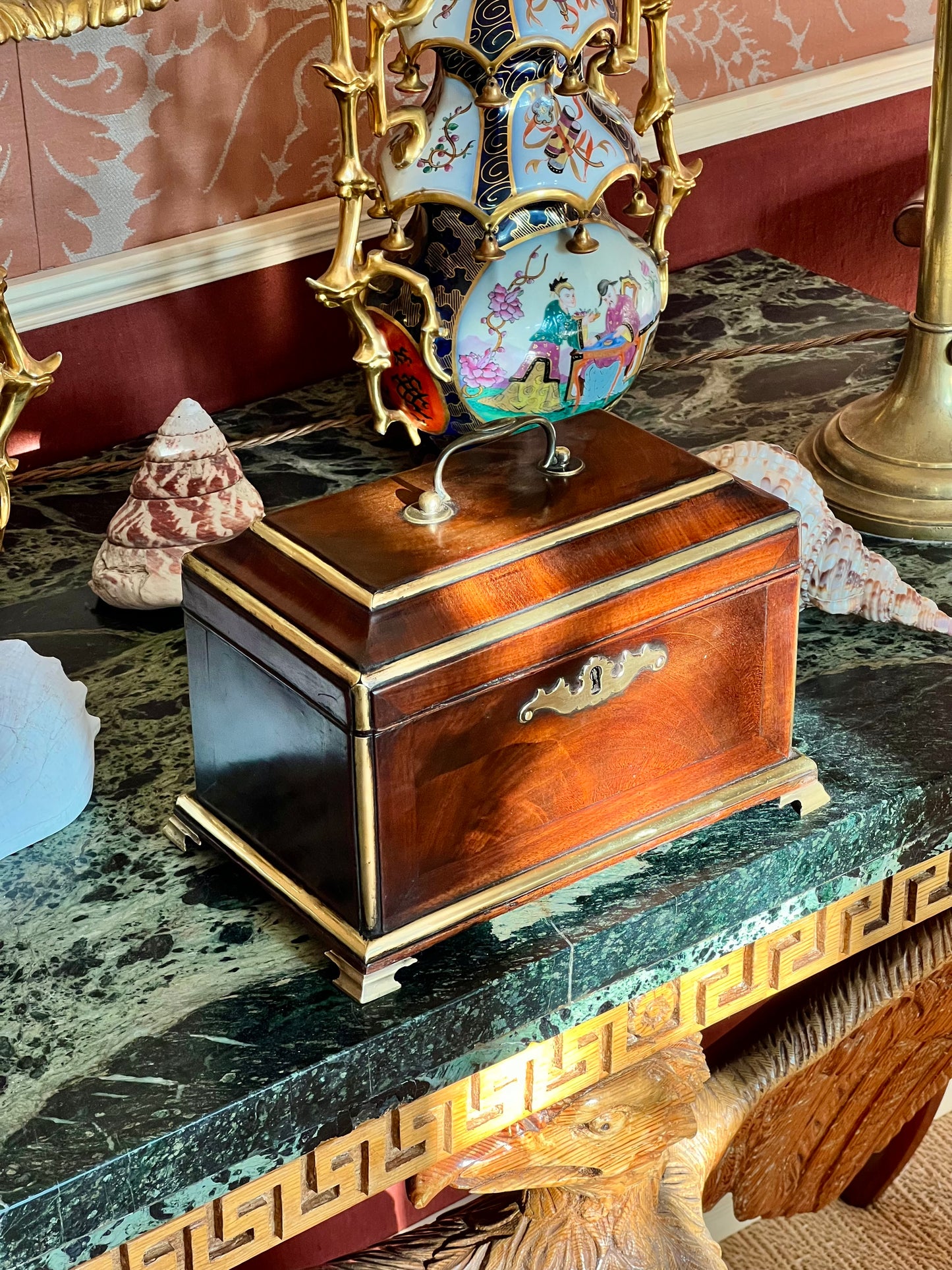
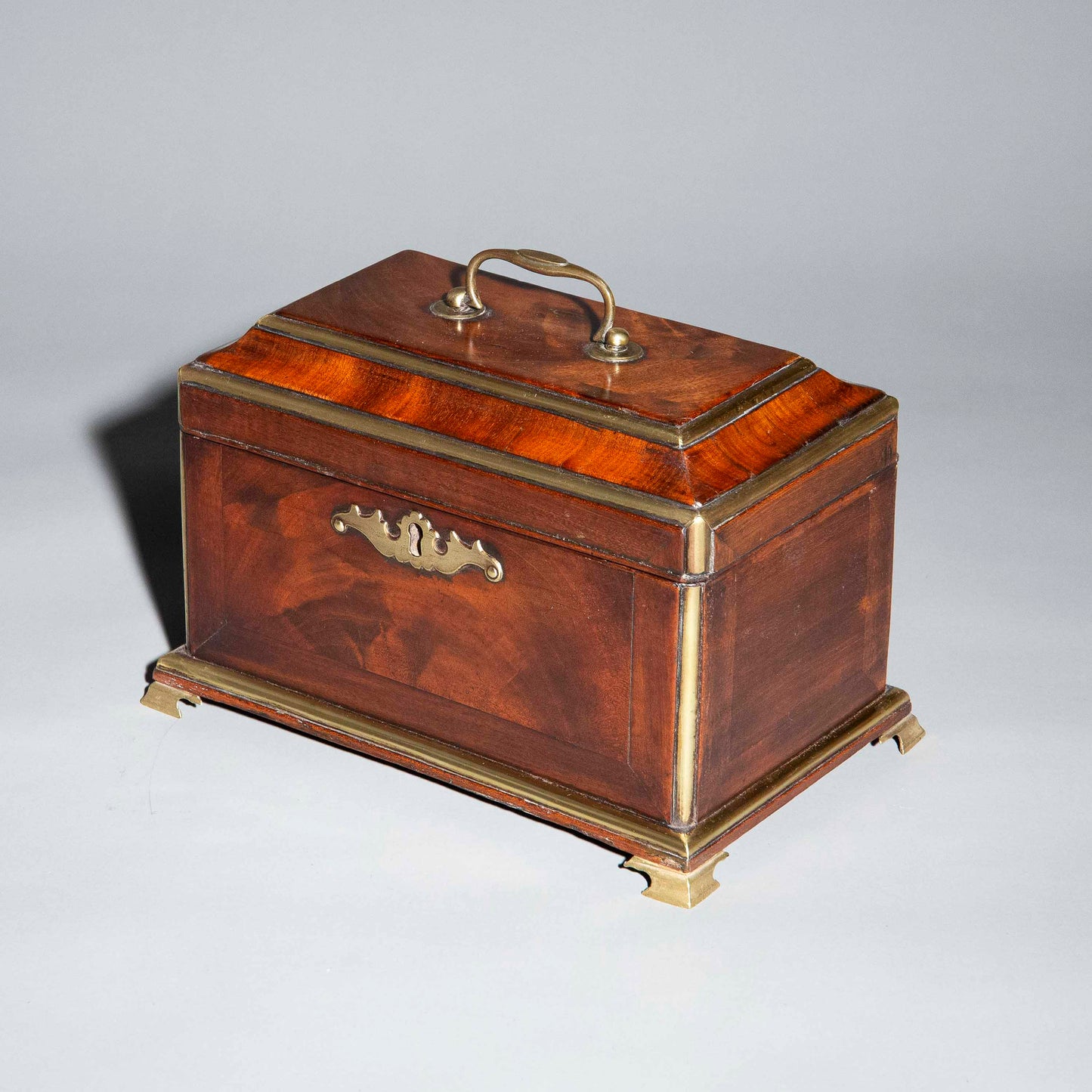
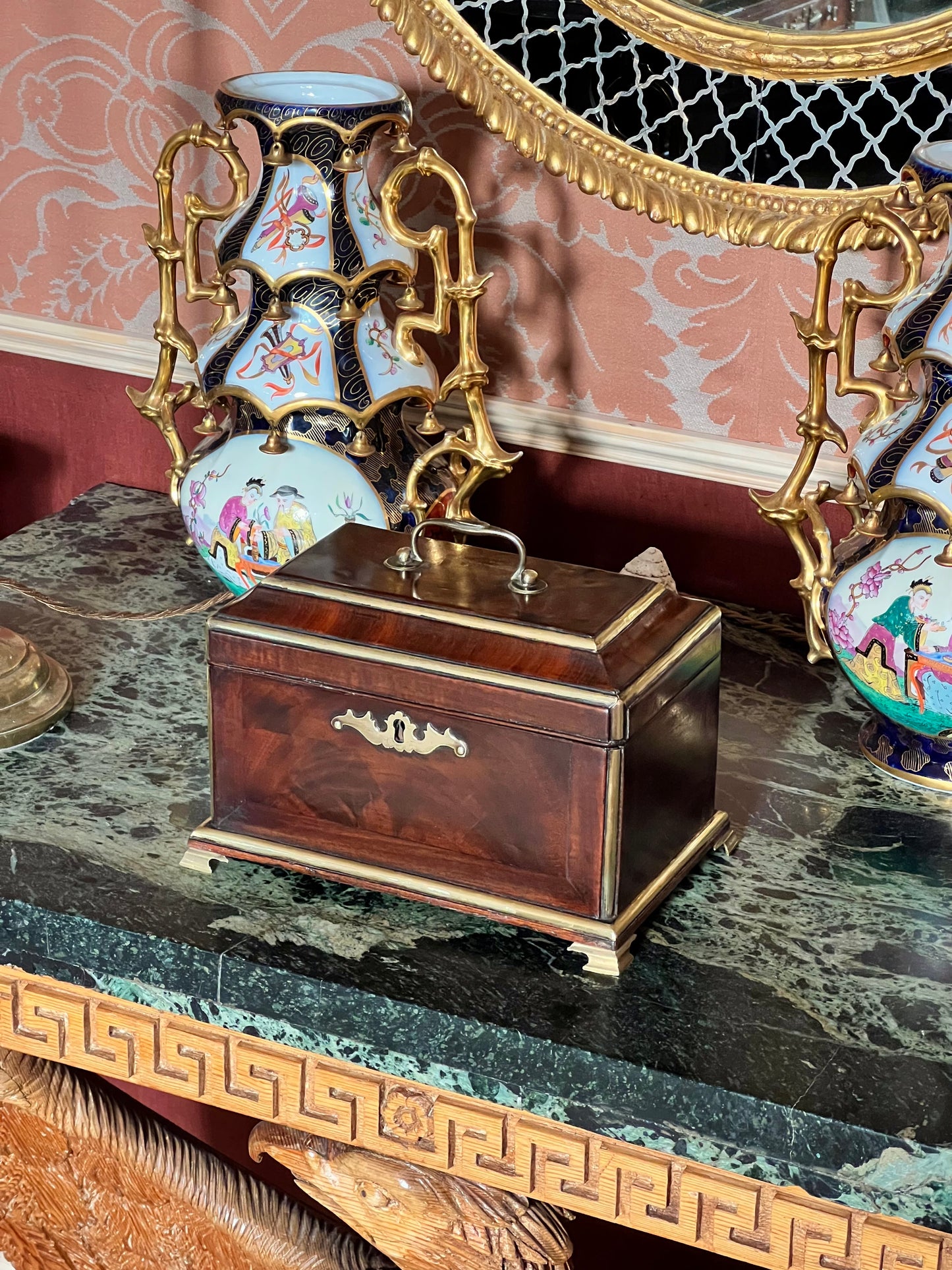
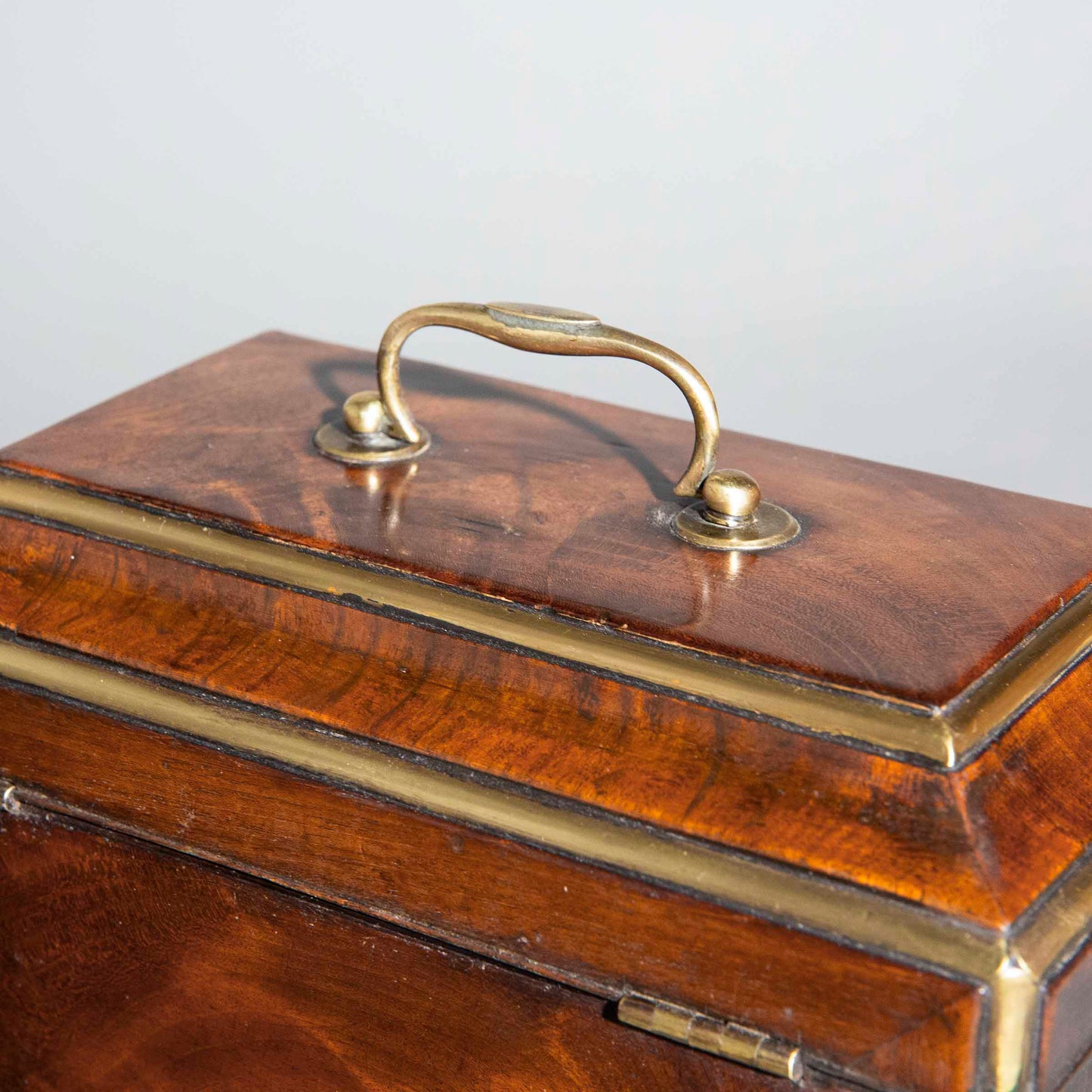
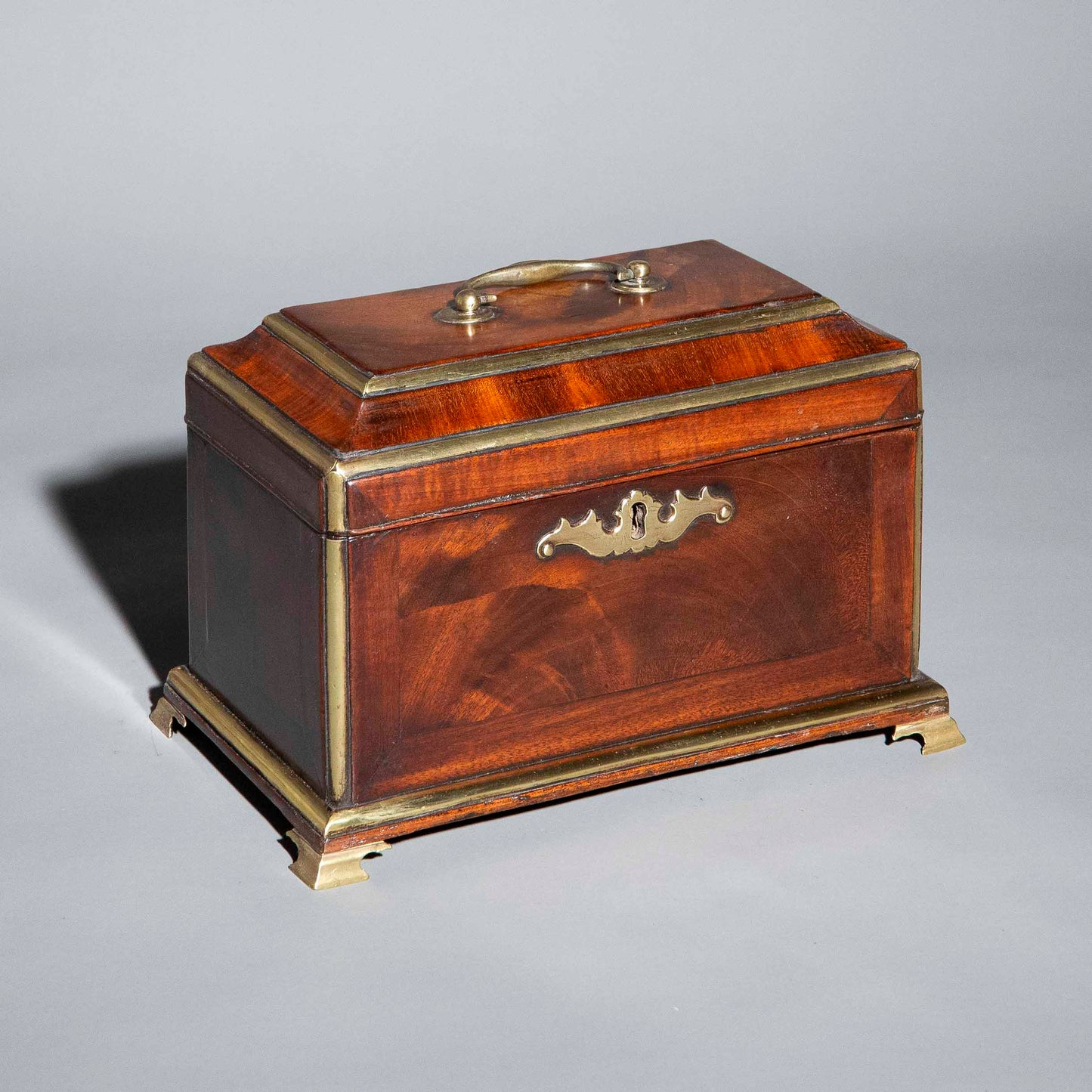
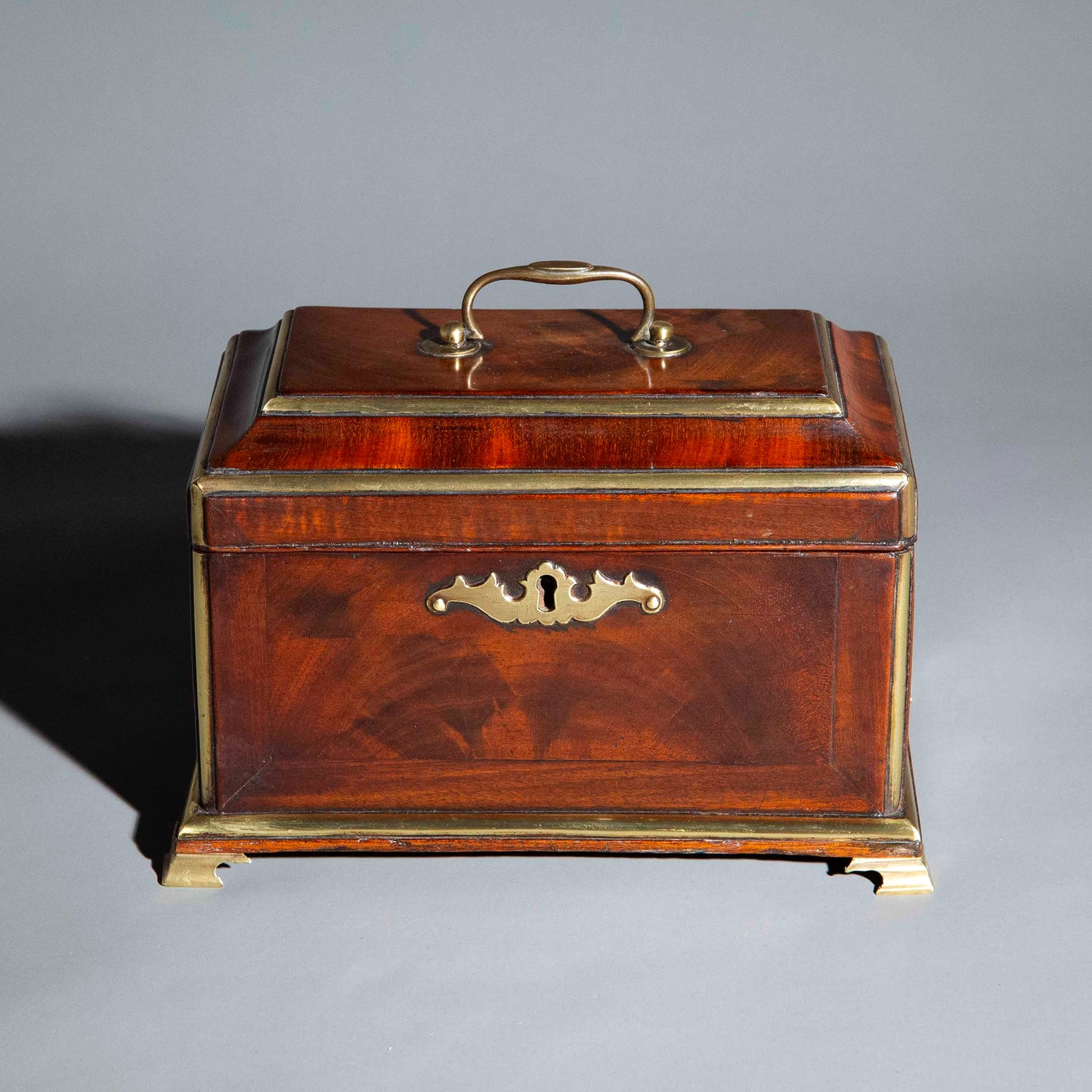
This incredibly rare tea-chest is a fine example of the mid-18th century fashion for brass-inlaid furniture and boxes, and undoubtedly originates from the circle of outstanding craftsmen, active in London in 1730-1750’s.
Design
One such craftsman was the German cabinetmaker Johann Frederick Hintz, who ran a business at 'The Sign of the Porcupine Newport Street near Leicester Fields' during the 1730s. In an advertisement in the Daily Post in 1738, Hintz offered for sale 'A choice Parcel of Desks and Book-Cases of Mahogany, Tea-Tables, Tea-Chests, Tea-Boards, etc.: all curiously made and inlaid with fine Figures of Brass and Mother of Pearl'.
Hintz was a friend and associate of the better-known German maker, Abraham Roentgen, who was working in London during the years 1733 to 1738. A known group of similar tea chests attributed to Abraham Roentgen shares the same brass-strung corner pattern, with many also retaining the same handle as the present example. After returning to Germany, Roentgen is known to have imported brass mounts from England for his furniture, and possibly ordered them from pattern books acquired while he was in London.
Another common feature of Rontgen's tea-chests - and of those by makers of other brass-mounted and/or inlaid chests - is a shallow drawer for teaspoons in the base; in the present example the ‘secret’ drawer is revealed by sliding one side of the chest upwards. An identical device is illustrated in The Story of British Tea Chests and Caddies, 2022, p.112 fig. 5.57, while fig. 5.56 represents a closely related Roentgen’s piece with the handle, identical to the present tea-chest.
Why we like it
Gorgeous proportions combined with figured wood and smart brass inlays. And who doesn’t like a secret spoon compartment?
Dimensions
Width: 25.5 cm / 10”
Depth: 16 cm / 6.25”
Height: 18 cm / 7”
